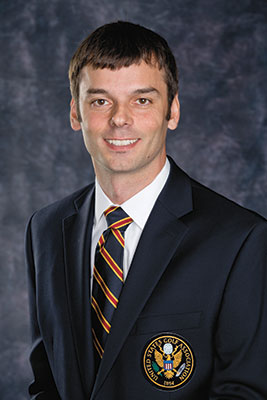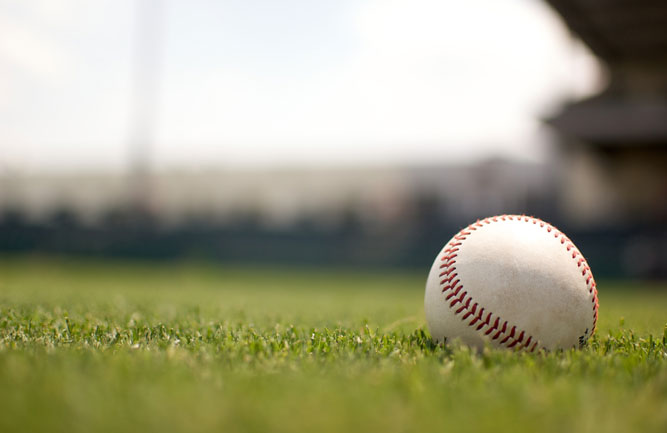Modernizing the rules of golf
 Golfdom discusses the proposed rules changes with the USGA’s Craig Winter, director of rules and amateur status.
Golfdom discusses the proposed rules changes with the USGA’s Craig Winter, director of rules and amateur status.
Five years in the making, the United States Golf Association and the Royal & Ancient last month unveiled proposed changes to “modernize” the Rules of Golf.
This preview allows for six months of review and discussion before being finalized in 2018 and implemented in 2019. For a complete overview of the proposed changes — 24 in all — visit usga.org/rules.
Shortly after the proposed changes were announced, Golfdom caught up with Craig Winter, the USGA’s director, Rules of Golf and amateur status, to discuss these proposed changes to the rules.
Golfdom: It’s been a busy time for you. What’s the clubhouse leader in the proposed rules changes that you’ve been asked about most often?
 Winter: Probably, “Why don’t I get relief from my ball in a divot?” and, “How have you fixed stroke and distance?” We certainly recognize that stroke and distance is a problem for many people in the game. We’ve fielded a lot of questions on that particular issue, and we’ve put out quite a few resources of what we thought about to date. We’re committed to continuing that discussion to find a solution.
Winter: Probably, “Why don’t I get relief from my ball in a divot?” and, “How have you fixed stroke and distance?” We certainly recognize that stroke and distance is a problem for many people in the game. We’ve fielded a lot of questions on that particular issue, and we’ve put out quite a few resources of what we thought about to date. We’re committed to continuing that discussion to find a solution.
Golfdom: Do you think any of the proposed modifications will be of particular interest to our readers, in that they could impact the way superintendents do their jobs?
Winter: Yes, I think there are probably two. I’ll start with one that is less so — allowing players to repair just about anything on a putting green before they play. This is one where — we hope anyway — that this is encouraging maintenance of the putting green, not just with what your readers do, but also everyone who is playing the game. Hopefully that trickles down to make it easier for superintendents to provide that surface they’re looking for.
The bigger change we’re proposing is about how courses are marked. Today there’s the opportunity for committees to decide whether a water hazard is marked a little left or right of where it might be, but ultimately water hazards must be marked under the Rules of Golf. There’s a specific procedure on whether it’s red or yellow. Ultimately, what’s being proposed here is the red/yellow designation be lifted. If the committee wants to mark a water hazard red they can, yellow they can, it’s ultimately about what relief options they want to provide to the player. That’s a pace-of-play saver.
Where this most impacts superintendents in how courses are marked is that it’s not just about water hazards anymore (we’re calling them “penalty areas.”) It allows courses to mark areas that previously were not possible to be marked, such as desert, lava rock, forest, tall grass areas.
I would assume a lot of budget goes into maintaining those areas to keep pace of play, because when a ball is lost in an area that is not a water hazard under the rules today, the player’s only option is to go under stroke and distance, walk back or play a provisional ball. Here, if a course would like to, they could put a yellow line, a red line around it, and if the player doesn’t find their ball, the player can take the water hazard relief option that we know today and continue. It’s possible that may lead to areas that don’t need to be maintained to the level they are today.
Golfdom: Speaking to greens and allowing golfers to fix damage, some of that damage comes from aggressive new cleats that golf shoe manufacturers have out on shelves. Any chance those could be banned to help prevent this damage from occurring in the first place?
Winter: That’s more of an area that we would look at from the equipment than the rules. Spikes that a player may have, whether spikeless, composite, metal — as far as equipment goes — are not addressed in the Rules of Golf. Obviously, there are a lot of products on the market; generally, we don’t like to get in the way of that. But that may be an area where they are looking at, but I’m not aware of it.
Golfdom: It’s interesting that there’s a proposed rule to give golfers a chance to take a drop outside a bunker with a two-stroke penalty.
Winter: We have a code of rules that modifies the Rules of Golf for golfers with disabilities. This is an option that’s been in those modifications since they were put together. When we looked at it, it also deals with the pace-of-play issue. In the back of our minds on all these changes were things we can do (to benefit pace of play), but still maintain the fundamentals of golf, the traditions, the history. This one, we felt, a lot of golfers could benefit from, especially beginning golfers or higher-handicap golfers.
Golfdom: I think a lot of people will appreciate dropping the two-stroke penalty for hitting the flagstick with a putt.
Winter: This one can come into play so often. This is a whole lot about pace of play. When you’re playing by yourself or just with a couple people, the reality is you’re always optimistic when you have that 40-footer. If you look back at the history of the rules — and we did that throughout all this process — this is (a rule) that came and went, came and went. The late 1960s was the last time golfers were permitted to putt with the flagstick in. Is there really any reason to have players pull the flagstick, especially in those situations where it’s just going to slow down play? We didn’t see a reason to do so.
Golfdom: I’m seeing more and more people with music in their golf carts, and I might be one of them. Why did the USGA and the R&A feel compelled to touch on this topic?
Winter: Well, we do call this the “rules modernization initiative,” and I think this is one of many changes that (if) you look at the way the game is played today, it’s not the same as it was played in the past. The prohibition was introduced only in 2014 by decision. We have a rule in golf that limits how golfers can use artificial devices. This is really just a recognition that if you want to listen to music on the golf course because you want to be entertained, that’s OK. But we still have a line in the sand that says, look, if you’re doing it to help with your tempo, to relax you, to eliminate distractions — we still don’t want artificial devices to be able to assist you, so that particular use would still be a prohibition.
Golfdom: Do you like to listen to music on the golf course?
Winter: I don’t do it that often, but when I go on some golf trips I’ve certainly been known to appreciate the music that others have put on.
Golfdom: OK, but if you were choosing the tunes, what would you put on?
Winter: If I was doing it? When I go to the driving range I typically have something — classical or folk music. Emmylou Harris, Ben Harper would be playing in my ears. But the purpose of that would be to eliminate distractions of the other folks working on their games. Doing that on the golf course would be exactly why we prohibit it.
photo: USGA










